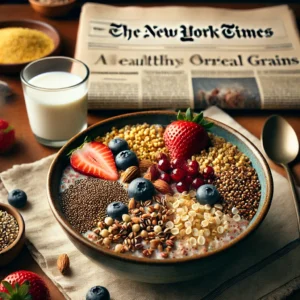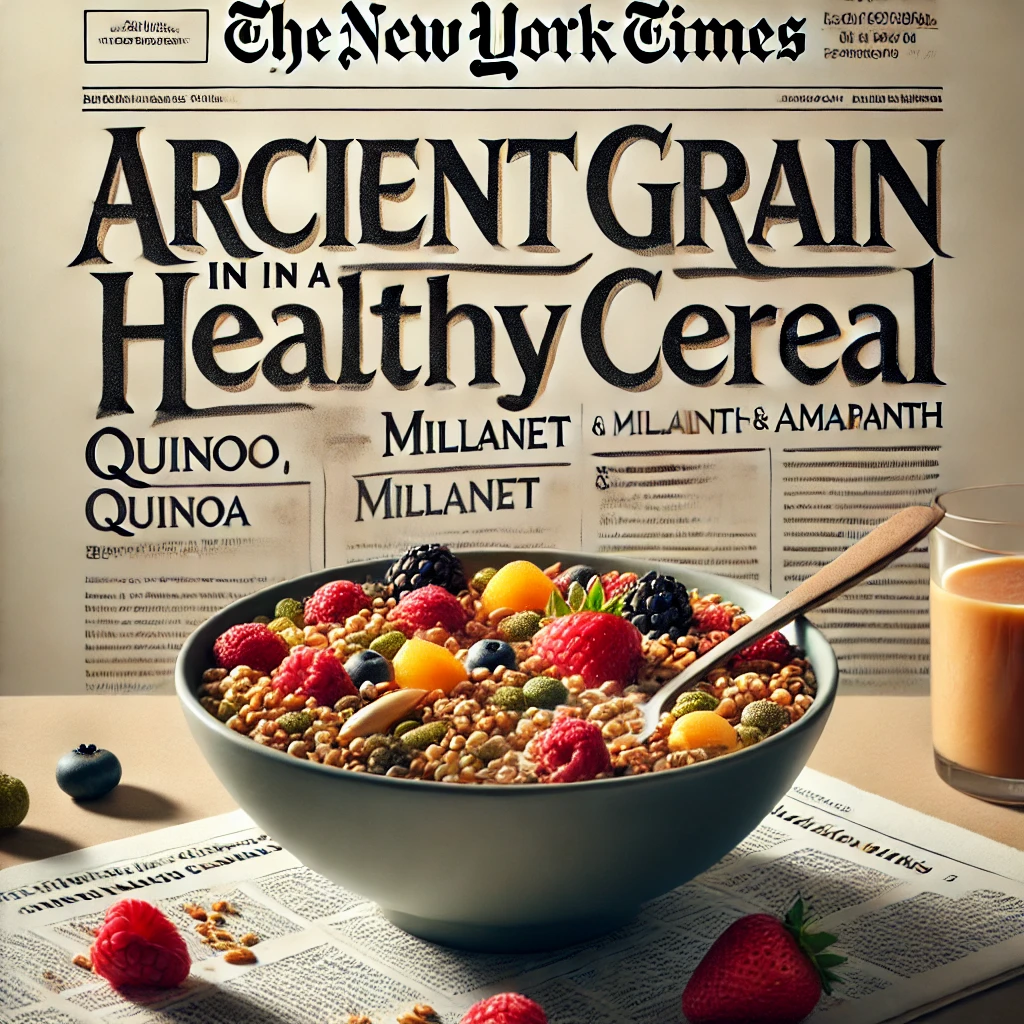Ancient Grain in a Healthy Cereal: The New York Times Insights
The rise in demand for healthier breakfast options has sparked a revolution in the cereal aisle, and at the heart of this transformation is a time-honored ingredient: ancient grains. Mentioned frequently in health-conscious circles and even by reputable sources like The New York Times (NYT), ancient grains are being hailed for their superior nutritional profile compared to modern processed cereals. This article explores the benefits of incorporating ancient grains into healthy cereals, highlighting why they are gaining popularity among consumers looking for nutritious and sustainable food choices.
What Are Ancient Grains?
Ancient grains refer to varieties of grain that have been largely unchanged for thousands of years. Unlike modern grains like corn, rice, and wheat, which have undergone extensive selective breeding, ancient grains such as quinoa, farro, spelt, and amaranth remain close to their original form. According to The New York Times, these grains not only provide a richer source of nutrition but also contribute to biodiversity, a key component in sustainable agriculture.
Ancient grains are packed with essential nutrients, including high levels of protein, fiber, vitamins, and minerals. This makes them a standout option for people seeking healthier alternatives in their diet. When ancient grains are used in cereals, they offer consumers a satisfying, nutrient-dense start to their day.
The Nutritional Benefits of Ancient Grains in Healthy Cereal

A key factor driving the shift towards cereals containing ancient grains is the nutritional punch they pack. The fiber content in grains like quinoa and farro aids digestion and supports gut health. Furthermore, these grains are often rich in protein, which helps in maintaining energy levels and sustaining muscle mass. For example, a cereal that includes amaranth, an ancient grain known for its high protein content, provides a much more balanced meal than traditional processed cereals, which are often loaded with sugars and artificial ingredients.
Many people are turning away from refined grains due to their association with blood sugar spikes and low nutrient density. Ancient grains, on the other hand, have a low glycemic index, which means they release glucose into the bloodstream at a slower rate, helping to prevent the spikes and crashes that come with sugary cereals. This makes ancient grains an excellent option for people looking to maintain steady energy levels throughout the day.
Sustainability and Ancient Grains
In addition to their nutritional benefits, ancient grains contribute to environmental sustainability. Large-scale production of modern grains has led to issues like soil depletion and loss of biodiversity. The New York Times reports that incorporating ancient grains into farming practices can help mitigate these issues, as they are often more resilient to extreme weather conditions and pests, reducing the need for pesticides and other harmful chemicals.
By choosing cereals that use ancient grains, consumers are supporting farming practices that promote biodiversity. This is especially important in an era where climate change and environmental degradation are becoming more pressing concerns. Sustainable farming of ancient grains helps maintain the balance of ecosystems and ensures food security for future generations.
Ancient Grain Cereals: A Growing Trend
The popularity of ancient grains in cereals is growing, and for good reason. Major cereal brands, as well as smaller organic companies, have started incorporating ancient grains into their products to meet the demands of health-conscious consumers. The New York Times has documented this shift in the food industry, noting that cereals made with ancient grains are becoming increasingly available in grocery stores. These cereals not only cater to the growing demand for healthier breakfast options but also align with the desire for more sustainable food products.
Many cereal brands are now combining ancient grains like spelt and millet with other nutrient-rich ingredients such as flaxseeds, chia seeds, and dried fruits. This creates a cereal that is not only nutritious but also flavorful, satisfying even the pickiest of eaters. For consumers who prefer to avoid gluten, many ancient grains, like quinoa and amaranth, are naturally gluten-free, providing a safe and healthy option for those with gluten sensitivities or celiac disease.
How to Choose a Healthy Ancient Grain Cereal

When choosing a cereal that incorporates ancient grains, it’s essential to look beyond marketing claims and examine the ingredient list. Many products marketed as “healthy” or “natural” may still contain high amounts of sugar or artificial ingredients. The best ancient grain cereals are minimally processed, made with whole grains, and contain little to no added sugars.
Reading labels is a crucial step in identifying truly healthy cereals. Look for cereals that list ancient grains as the first ingredient and avoid those with a long list of unrecognizable additives. According to The New York Times, the most nutritious cereals are often those with simple, whole ingredients and no unnecessary fillers.
Conclusion: The Future of Breakfast with Ancient Grains
Incorporating ancient grains into your breakfast routine can be a game changer. Whether you’re looking to improve your overall health, support sustainable farming practices, or simply enjoy a more wholesome and flavorful cereal, ancient grains offer numerous benefits. As highlighted in The New York Times, the growing trend of ancient grain cereals aligns with consumer demand for healthier, more sustainable food options.
The future of breakfast is undoubtedly changing, and ancient grains are leading the charge. As more people recognize the value of these nutrient-packed grains, the demand for healthier cereal options is expected to rise. By choosing cereals made from ancient grains, consumers can enjoy a delicious, balanced meal while supporting their health and the health of the planet.














Post Comment